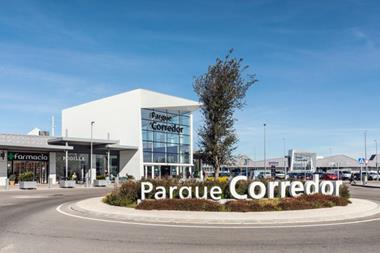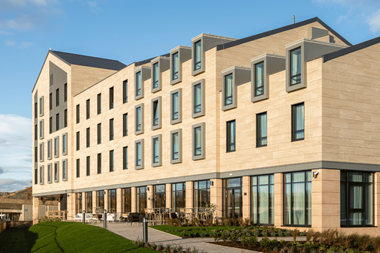Luxembourg-based investment firm Aeriance Investments is putting its money right at the heart of the action.
Luxembourg-based investment firm Aeriance Investments is putting its money right at the heart of the action.
Unlike some investors who invest in real estate assets both directly and indirectly, Aeriance has focused entirely on one product since its inception in 2008: debt. At a time when other alternative lenders are clamouring for an increasingly large share of the market, Aeriance is thinking big with plans to raise a mammoth €1 bn for two new debt funds over the next year, according to the firm’s incoming chief executive, Harin Thaker.
‘We would like to raise €1 bn for our two new funds, Aeriance Mezzanine Real Estate Debt Fund 3 (AMREF 3) and Opportunistic Real Estate Loan Fund 2 (OREL 2), over the next year,’ said Thaker, who joined Aeriance from pbb Deutsche Pfandbriefbank in October. ‘We’d like to have the first closing for both funds by the end of the first quarter next year and ideally we would like to be making our first investment soon after.’
Thaker is not new to the European lending market and brings over 20 years experience to his new role. He was previously head of international real estate finance at Munich-based Pbb Deutsche Pfandbriefbank, a specialized lender in real estate finance and public sector finance. He was also CEO of the EMEA region at pbb’s troubled predecessor, Hypo Real Estate International, between 2005 and 2011, becoming a member of the management board in 2007.
The surge in demand on the part of institutional investors for debt-linked products is behind Aeriance’s drive to increase its exposure to European debt: ‘We feel that there are still opportunities in the market for debt funds, especially now that institutional investors have finally come to terms with debt fund investments as an asset class. They have become popular because they offer stable returns of around 8% to 9% but are low-risk,’ Thaker said.
In 2005 and 2006 there was a boom in fund launches across all strategies, according to Thaker, with many of these funds due to come to the end of their cycle in 2015. ‘This quantum alone should create a shift in the market; the landscape has since changed in the fund raising space. Core plus, the distressed debt play and debt funds still continues to attract the attention of risk-averse houses,’ Thaker said. ‘We have to watch the investing spectrum very carefully going forward. Some markets have corrected rapidly. However, for the time being, given the improving fundamentals, growing operating incomes and strong cash flows, slow and marginal increases in interest rates are unlikely to affect the cap rates,’ he added.
Aeriance’s new funds have a target size of around €500 mln each. AMREF 3 is a closed-end fund focusing on mezzanine debt across Europe. It will also invest in publically traded debt, such as CMBS. It has a target dividend of around 6% per year. OREL 2 is a closed-ended fund focusing on both senior and junior debt backed by high-end residential properties in London’s ‘golden’ postcodes such as Mayfair, Belgravia and Notting Hill. It is the follow-on fund to Aeriance’s OREL 1, launched in 2011, which delivered distributions of 9% per year after the initial investment period with an overall expected gross IRR of 14%, according to Aeriance.
Thaker estimates that it will take Aeriance between 18 and 24 months to fully-invest both funds, which won’t be geared at the fund level. So far, investor interest has come from a broad range of investors, include pension funds, sovereign wealth funds, HNWIs – in Europe, the Middle East and elsewhere.
Non-traditional lenders have poured into the European debt space this year, with debt funds quickly becoming the new buzzword in real estate circles. Indeed, investor interest in debt has become so strong that DTZ has estimated that there will be around €130 bn of new lending capacity from non-bank lenders between 2013 and 2015 across Europe, propelling key markets such as Germany, France and the UK towards a lending surplus. Debt funds and insurance companies are the most prominent new players entering the fray, keen to take advantage of unprecedented demand on the part of institutional investors to find new real estate asset classes in which to invest.
AMREF 3 will initially focus on the UK, France and Germany but will quickly extend to the Nordic region, Thaker said. ‘For now, we’ll avoid markets that are not performing well, such as Spain, southern Italy, Portugal and Ireland. Typically, we will underwrite loans of up to €50 mln although we are also open to club deals on big ticket loans, especially if the deal concerns an underlying operating business, such as a hotel,’ he added.
Aeriance’s OREL 2 fund offers construction loans for bridge finance to convert houses or offices into apartments, or to convert properties that were once residences and have since been converted into another use back into residences. ‘We’ll fund the construction cost, much like a senior construction loan,’ Thaker said.
And further fund launches could be on the cards, he said: ‘We’re pretty opportunistic, so we can react quickly to market changes. The market has changed dramatically in the past year, with annual returns falling from 9% to 12% a year ago to 8% to 9% today. However, if we identify a unique opportunity, we can immediately launch a fund to take advantage of it,’ he explained.
So far this year, Aeriance has underwritten €200 mln of mezzanine loans across its existing funds, including a £25 mln mezzanine loan for a 355,000 sq. ft. office in Manchester, in the UK, for its AMREF 2 fund. It also underwrote a £14 mln senior loan for the development of a 78 room hotel in London for its AMREF 1 fund.
COMPANY PROFILE: Aeriance Investments S.A.
Aeriance Investments is a Luxembourg-based investment firm specializing in real estate debt. It is part of the bigger pan-European real estate investment manager Aerium Group which has €6.1 bn of AUM. Aeriance Investments currently has four debt funds under management investing in both commercial and residential real estate: Opportunistic Real Estate Loan Fund 1 &2, Aeriance Mezzanine Real Estate Debt Fund 3 and its ASTREL fund. The funds are managed by 14 members of staff, of whom half are in London and half in Luxembourg.
Combined, the funds have underwritten €1.4 bn of loans over the past five years and currently have almost €600 mln of AUM. The group’s AMREF funds invest primarily in debt exposures of approximately 60% to 80% LTV backed by high quality real estate assets. The funds expect to distribute 5% to 6% per annum in dividend income. Aeriance’s ASTREL fund has similar investment criteria to its AMREF funds, albeit with a lower exposure in the capital structure, normally not higher than 60% LTV.
In addition, Aeriance invests in residential real estate loans in ‘golden’ London postcodes, such as Knightsbridge and Belgravia. The exposures are conservative and limited to 65% LTV. The firm is regulated by the Commission de Surveillance du Secteur Financier (CSSF).
PERSONAL PROFILE: Harin Thaker
Harin Thaker, who is based in London, joined Aeriance Investments in October 2013. He was previously head of international real estate finance at Munich-based Pbb Deutsche Pfandbriefbank, a specialized lender in real estate finance and public sector finance. He was also CEO of the EMEA region at pbb’s troubled predecessor, Hypo Real Estate International, between 2005 and 2011, becoming a member of the management board in 2007. Thaker started his career in real estate at what was then known as Hypo Bank in 1992, which later became HVB Group. He was soon integrated into the core banking activity of the bank, becoming a general manager of HVB’s London branch and launching investment banking activities to spearhead the bank’s expansion into markets such as central and eastern Europe, Russia and India.










